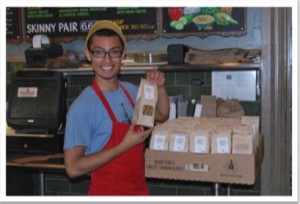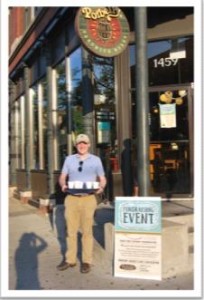The first activity we did as a class was the paper puppet project. This was done as a fun way to introduce us to Project Management. The main point was to show the class how a basic supply chain worked and how to identify a bottleneck. Additionally, as a class, we learned the importance of product quality and communication. We also touched on the idea of crashing when talking about the complexity of the second task. Throughout this demonstration I kept thinking about how it was similar to a project I worked on this summer.
I started an internship a few weeks after school ended at a mobile second hand ticket broker called Ticket Scalpr (which is like a mobile stubhub). My six coworkers and I were tasked with creating stadium guides for all the NFL and NCAAF Big Conference teams, 120 in total. Each guide included a few paragraphs of stadium history, fan pictures, videos, restaurants, and a top ten best features list for each stadium. The end result would be a website new where visiting fans could find enough information about the venue to enjoy each game like a local. Even though team member had their assigned stadiums, communication was key. When one of us found a good source of information or pictures, it would get shared so that everyone start adding content as quickly as possible, working together to knock out the bottleneck task of finding pictures and video as quickly as possible. We also talked about quality. With no real quality control until a final review; we had to judge for ourselves what to use.
The project manager used many of the concepts we learned about in class. He would often ask us how long we thought it would take each one of us to complete a task so he could estimate the earliest completion time. Once the project manager identified our bottleneck he took it upon himself to crash the project for us. He shortened the project duration by a few weeks through outsourcing the gathering of pictures and video to another contractor. We liked this because finding the pictures and video was one of the more tedious factors of developing the guides. Overall the project took much longer than anticipated based on the quality they wished to present on the website. Thus, the initial goal of moving on to social media by mid July was missed, we finished all the stadium guides by the end of summer with a high degree of quality.
Right now the website has yet to launch. I’m not sure what else needs to be added or changed to get everything ready to go, but the project has already taken longer to complete than anticipated. The only change I could really see to make this project go smoother would be to add manpower and possibly create a information sharing library to enable the reuse of content.
What else would you recommend to management to speed up the project?
www.ticketscalpr.com




